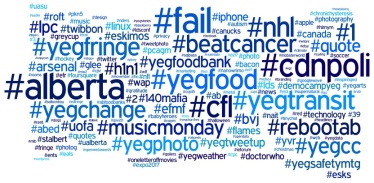Fame and Fortune? Maybe for them…
Look around for a minute. A significant portion of commercials or ads you see showcases a celebrity to endorse the product. It is estimated that nearly 20% of all ads have a celebrity face associated with it. The main question I’m wondering is whether or not this really has significant impact and a good return on investment. Look, in today’s emerging media, ads are no longer relegated to your traditional television, radio and print forms of marketing. Social Media is quickly becoming the common powerhouse. This even makes it simpler for celebrities to endorse a product through the varied online marketing campaigns. But is it really worth it?
Some cases can be seen where celebrities are viewed as experts in the use of the product. One such field that quickly comes to mind is the athletic industry. These celebrities and/or sports figures are seen as highly knowledgeable in the product they’re endorsing. Many aspiring athletes will take that to heart and go out and purchase that product as it will miraculously make you jump higher, run faster, be stronger and look cooler. This I get. Heck I’ve fallen into this notion many times growing up.

Siri, say ‘what’ again!
BUT what I can’t get my hands around is the fact of using celebrities that have nothing to do with the product, service, quality or knowledge behind it. Let’s take Carl’s Jr ads for example. Sure they typically have the “hottest” semi-clothed women eating a burger. Sure it makes nearly every male turn and look. But really…what’s the purpose? Seeing a world known model eating a burger surely didn’t cause me to want to out and buy one nor did it cause me to like that burger chain over another. There are so many examples of this that many blog posts can certainly be written about each one.
Now what about in today’s social media world? It’s far simpler to see which celebrities are endorsing which products with a click of the mouse. With the spread of ease of using social platforms, perhaps it can be anticipated that more and more ads/campaigns featuring celebrities will pop up. However again comes the question, is it really doing anything? Several case studies show that no, not enough gains have been attributed to the use of these figures. So, if you’re looking to do the same (and have the budget to do so), how about making sure the celebrity figure can somehow tie a tangible notion to your product (like athletes can)? Otherwise you may just fall into the same trap of spending big bucks for “xyz” name and having everyone scratching their heads or worse yet, simply not acknowledging the ad.









